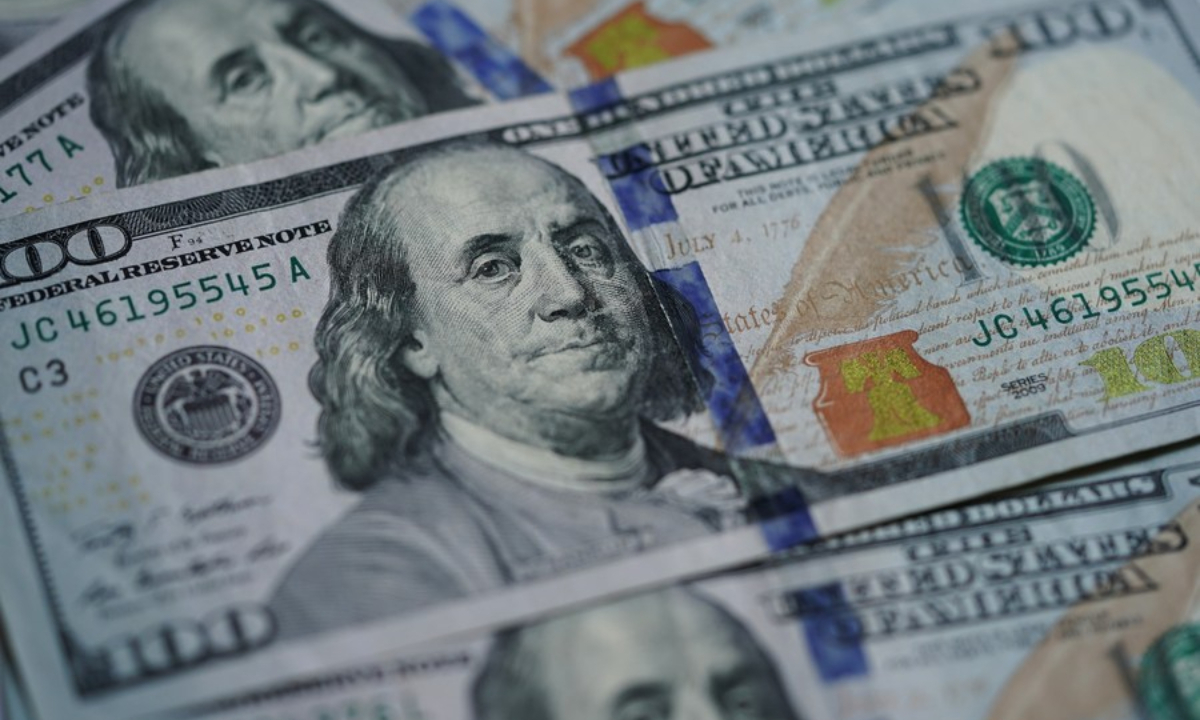With US inflation coming down, investors’ eyes turn to Federal Reserve for rate cuts

Photo taken on March 17, 2020, shows US dollar banknotes in Washington, DC, the United States. (Photo: Xinhua)
The consumer price index (CPI) in the US, a key gauge of inflation, dropped to 2.5 percent in August, which sets the stage for the Federal Reserve, the country's central bank, to possibly start reducing interest rates at its next meeting on September 17-18.
The evidence that inflation is moving toward the central bank's 2-percent target is welcome news for the policymakers and the average household in the US as the cost of living has finally come down.
With the US price levels coming down to a three-year low, it is high time for the Fed officials to reverse its policy of monetary tightening, otherwise, the country's job market and the broad economy will be jeopardized under the pressure of the elevated interest rates, which currently hover at a 23-year high of 5.25 to 5.5 percent.
The CPI data marks one of the last major economic indicator releases ahead of the Federal Reserve's important meeting next week, and paves the way for an expected quarter-percentage-point cut to the benchmark rates. In July, the CPI reading was 2.9 percent.
"The time has come (for a policy change)," announced Jerome Powell, the Federal Reserve chairman last month at a major monetary policy forum in the US. From July's 2.9 percent to August's 2.5 percent, the US inflation is truly on a "sustainable path" back to normalcy.
High interest rates work like the brakes tapped on the economic engine, as staggering borrowing costs will limit businesses and households to ask for bank loans, causing economic activity to slow down. The world's central banks have always sought a so-called "soft-landing" for a heated economy, where inflation is curbed and at the same time recession is avoided.
But attaining a "soft landing" is never easy. Currently, investors worldwide are kept "nervous" till the time the Federal Reserve settles on a rate cut next week. Although most expect a quarter-percentage point reduction, the case for a half-percentage point cut is palpable.
The US job market is no longer strong. There are signs that people who need jobs are having more trouble getting them, and the number of Americans deemed long-term unemployed - those out of work for more than six months - has risen. In surveys, workers say they are less confident than they were in 2023 that if they lost their jobs, they could land a new one quickly.
Last month, a lackluster job market report triggered fears of an imminent economic downturn, causing the US stock market to nosedive amid ferocious sell-offs. Since then, there has been mounting criticism that the US central bank has stayed disproportionately on controlling inflation for too long, jeopardizing its job market. The Fed officials earlier said that a sharper deterioration in the job market could push the central bank to cut rates more aggressively.
As evidence has grown that inflation is headed back to 2.5 percent now, critics say that the Fed policymakers should immediately turn their attention from taming price pressures to shoring up the labor market and the economy.
However, there is too much contradictory data arising in the US economic surveying system. The so-called core CPI reading, which leaves out volatile energy and food prices, came in higher than the market expected, rising 0.3 percent in August. The uptick was driven primarily by a 0.5-percent rise in the housing index, which tracks American real estate-sector expenses.
And, this "core" CPI was getting attention from investors, which is also closely monitored by the Fed policymakers. Following the announcement of the "core" CPI, investors ramped up their bets on a quarter-percentage point interest rate cut, and lowered bets on a half-percentage point reduction.
Obviously, the Fed policymakers don't want to cut too much too quickly, as they are likely concerned that doing so could heat the economy again and make inflation a persistent problem. Naturally, the US monetary policy uncertainty will continue to lead to global market volatility in the coming months.
Photos
Related Stories
- Three massive wildfires continue to burn in Southern California
- California's homeless crisis persists despite efforts
- U.S. confirms new human H5 bird flu case
- U.S. export control measures on national security grounds draw pushback
- Wildfires rage across western U.S. amid intense heat wave
- Weak U.S. jobs report signals slowing economy, giving green light to Fed rate cut
Copyright © 2024 People's Daily Online. All Rights Reserved.









